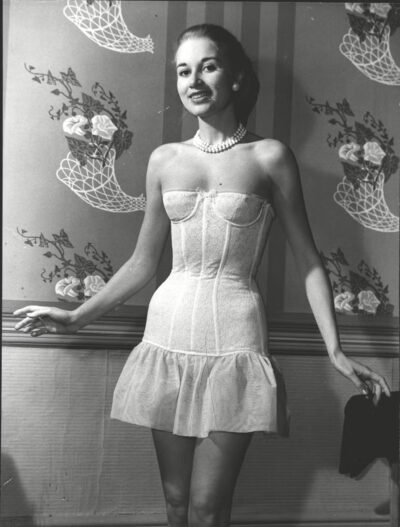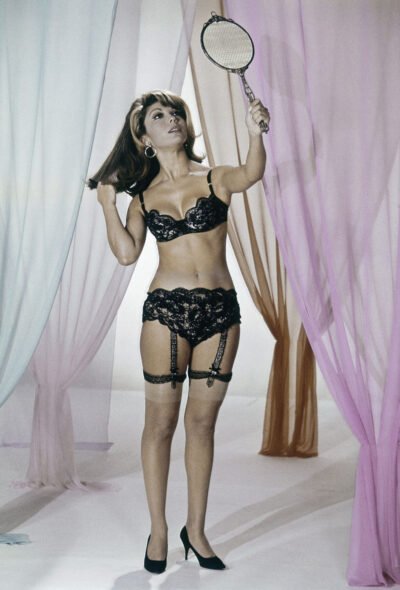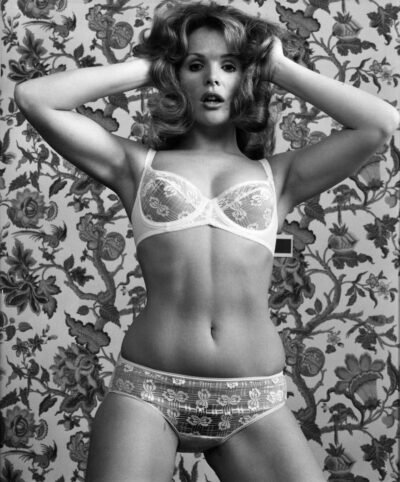- May 23, 2025

The Second Half of the 20th Century: When Lingerie Stepped Into the Light
From bullet bras to bare skin, the second half of the 20th century turned lingerie into a symbol of confidence, rebellion, and self-expression. Whether worn to seduce or to be free, it became a reflection of a woman’s own choice.
Imagine: you’re wearing lingerie not because you “should,” but because you want to. Not for other people or to live up to expectations, but for yourself.
That was precisely how the period that upended ideas of feminine comfort, intimacy, and beauty started.
Lingerie changed from being a “hidden duty” to becoming a statement of the body, desire, and independence between the 1950s and the 1990s.
These were decades of self-love, revolutions, and contradictions — where every seam, every strap, every piece of lace told a story of change.
The 1950s: Physicality as Aesthetic
The globe yearned for gentleness following the hardships of war. And at the same time — it dreamed of perfection. Though not naturally feminine, femininity made a comeback in fashion. Instead, one that is marble-like, polished, and idealized.
The “hourglass” was the ideal shape, with a high chest, big hips, and a tight waist.
This picture was created by lingerie:
Breasts were significantly sculpted by bullet bras with pointed cups.
The waist was molded with precise geometry and little discomfort using latex elastic corsets.
Bodysuits, corset belts, and garters were everyday necessities for ladies who aimed to be the “perfect lady.”
Lingerie became both a fashion accessory and a tool of confidence. It was still a “frame” but no longer entirely oppressive”.
Stars and Dreams: Hollywood Teaches Seduction
In addition, the 1950s were the height of elegance, movies and stylish beauty.
Stars in glittering underwear, such as Sophia Loren, Bettie Page, and Marilyn Monroe, came to represent sexuality.
Lingerie took on a new significance during this period: it was no longer concealed. It was showcased on the big screen, in advertising campaigns, and in picture shoots.
Women no longer felt self-conscious about their bodies. They elevated intimacy to the forefront and transformed it into a kind of art.

1960s: Lingerie as a Form of Protest
There was a revolution taking place in the body as much as in culture. Everything seen as a “woman’s duty” was questioned by the second wave of feminism. The bra became a symbol of oppression and freedom. The notion that you are not required to wear one at all surfaced for the first time. Women symbolically tossed their bras into the “Freedom Trash Can” during the 1968 Miss America demonstration. Lingerie grew more simple, with unisex designs, cotton sets, and soft tops. During this decade, artificial forms, wires, and decorations were rejected. Being free was the aim, not pleasing others.

1970s: Sexuality Returns — On Her Own Terms
The sexual revolution and feminism were no longer at odds. Because they could, rather than because they “had to,” women started experimenting with lingerie. Plunging cuts, bright ensembles, sheer textiles and lacy bodysuits appeared. Once more, lingerie tempted, but this time it was for the lady rather than “for the man.” Women wore lace to feel beautiful, even alone at night. Brands noticed the shift — and began promoting a new aesthetic: intimacy as a personal style.

1980s: The Body is Power, and Lingerie is Its Ally
A cult of control, power dressing, fitness, and glamor were all part of the 80s fashion scene. Lingerie evolved as a useful component of the style. Everything was “sculpted” via the use of push-up bras, bodysuits with shaping features, high-cut underwear, and elastic fabrics. However, it was also a period of visual play: nude tones were no longer required, lace poked out from under jackets, and bras were worn over clothes. Lingerie was no longer only the basis for the style; it became an integral component of it. Famous fashion shows and companies started producing “lingerie stars.”

1990s: Individuality, Sport, and Minimalism
The world adopted the simplicity of the natural body after becoming weary of the glitz of the 1980s. Lingerie became simple, almost invisible. Soft sports bras, low-rise underwear, and seamless textiles have brought comfort back. Lingerie became clean, unisex, and a fashion statement thanks to brands like Calvin Klein. Lingerie now coexisted with the body rather than shaping it. It let you breathe, not draw attention to itself. And for the first time, the message was clear: whether to wear it, skip it, show it, or hide it — that’s your choice alone.

The Conclusion: From Freedom to Love
Lingerie endured for as long as a woman could think during the second part of the 20th century.
It was a weapon of seduction — and a symbol of protest.
It both reflected and defied societal norms.
The body was both formed and left unshaped by it.
But most importantly — it gave women the right to choose. And it left behind a lasting truth:
Underwear is not required. It’s an emotion.
A mood. A method of appreciating your own attractiveness, comfort, and skin tone.
The 21st century, the age of freedom, bralettes, organic textiles, and self-made style, will be covered in the upcoming part of this series.
With Love — Your Moonlit Team
